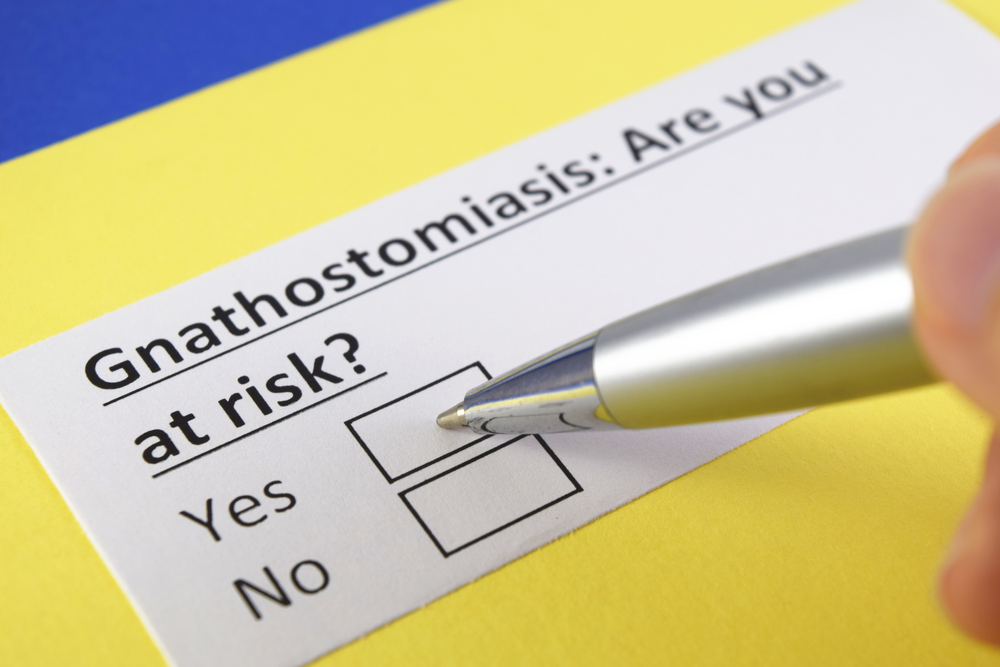Gnathostomiasis is the human infection caused by nematodes of the genus Gnathostoma. People become infected when they consume insufficiently cooked swamp eels, freshwater fishes, frogs, birds, and reptiles. The typical manifestations of Gnathostomiasis are migratory swelling and elevated levels of eosinophils in the blood.
Gnathostomiasis is caused by five species of Gnathostoma: G. spinigerum, G. binucleatum, G. hispidium, G. doloresi, and G. nipponicum. The five species are endemic in Asia, Latin America, and South and Central South Africa. Infections caused by the species G. spinigerum are common in Asia, specifically in Thailand. G. binucleatum is common in the Americas. G. hispidium and G. doloresi commonly occur in East and Southeast Asia, but the former has been reported in eastern Europe. At the same time, cases of infection caused by G. nippocum were all from Japan and China.


